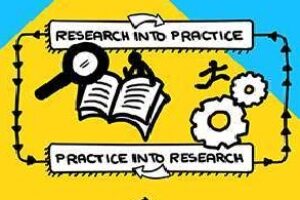Over the past few weeks, I have watched the education community come together in a beautiful and generous way – to navigate a situation never thought imaginable.
There truly is some comfort to be found in knowing that we are all in this together.
I have been amazed by the speedy creation and sharing of so many wonderful education resources, apps, Facebook groups, live Instagram classes, television programming, Youtube streaming, internet courses, etc.
In the meantime, schools have rallied to produce take-home packets of curricula, set up technology for distance learning, and train teachers to reach their students in completely new ways.
Teachers have quickly adapted to this new reality, and have risen to the challenge, as they always do.
And parents have found themselves in a profession they may never have considered.
We are all teachers now.
And yet, we also know that we have a long way to go.
Since the COVID-19 disruption, our focus here at EdMod has been 1) to listen to what you need, 2) to closely monitor how the special education field will likely need to adapt, and 3) to continue to support you – with what we do best – make learning more accessible for students with learning challenges.
In addition to our At Home Learning Resources we are sharing the following collection of low-tech DIY strategies that are easy-to-implement at home.
-
- Apply these strategies to ANY curriculum, lesson plan, or activity.
- Use these strategies to help your children access the work that teachers are sending home or your own activities.
Low-Tech DIY Strategies For Students With Learning Challenges
For Attention & Focus
1. Calming Manipulatives

Summary
Provide your child / student with a Calming Manipulative so that they are able to keep their hands busy while keeping their mind focused on learning.
Best for Students Who …
Frequently change from one activity to the next; Are fidgety or always up and on the go; Seem to be thinking about something other than the activity taking place in front of them.
DIY Tips
-
-
- Use what you have around the house such as a stress ball, velcro, small ball of play-dough, artist’s kneadable eraser, bendy straw, foam packing peanuts, etc.
- Take care that the object doesn’t make excessive noise or else it will become a distraction instead of a support.
- Explain the purpose of the object. Be clear that it is not a toy. Nor is it to take the place of the work or task at hand.
-
Related Articles
2. Elastic Chair Band

Summary
Provide your child / student with an Elastic Chair Band tied around the legs of a chair so that they can move their legs while quietly doing seated work.
Best for Students Who …
Have a lot of energy; Are easily distracted; Are kinesthetic learners.
DIY Tips
-
- Create your own chair band using elastic exercise bands, bungee cords, or rope.
- Document when during the day when your child / student is most hyperactive and needs physical stimulation.
Related Articles
3. Timer

Summary
Provide your child / student with a visual Timer so that they are able to see how much time has passed, monitor their own time-on-task and make better time management decisions.
Best for Students Who …
Are easily distracted internally or by outside stimuli; Delay task initiation.
DIY Tips
-
- Find a small sand timer from an old board game such as Boggle or Taboo.
- Set your oven or kitchen timer.
- Use our Analog Time Management GoogleDoc to help your child / student know how long they should stay on-task.
- If you have a computer / internet, use these fun online timer tools: Fun Online Classroom Timers (FREE)
Related Articles
For Reading Engagement
1. Sticky Note Annotation

Summary
Teach your child / student to develop the practice of Sticky Note Annotation so that they can mark, add a note, or ask a question about an important part of a text.
Best for Students Who …
Spend too much time and energy finding parts of a text; Struggle with note taking; Get lost in a text.
DIY Tips
-
- Use any type of Post It Note or self-sticking pad of paper.
- Make sure the sticky note is big enough for your student to write on. The square size is usually sufficient.
- Have students label pages in a book that contain their favorite quotes or questions about the plot.
Related Articles
2. Closed Captioning

Summary
Activate the Closed Captioning feature on your TV so that your child / student can read the dialogue while they watch and listen.
Best for Students Who …
Have trouble integrating sight and sound information; Are easily distracted; Need multiple avenues for engagement.
DIY Tips
-
- If possible, adjust the size and color of the subtitles so they are large enough and bright enough.
- Closed captioning can also be easily activated on streaming services such as YouTube, Netflix, etc.
Related Articles
For Task Initiation
1. Choice Board

Summary
Present your child / student with a Choice Board so that they are able to communicate their preferences and stay motivated and engaged with learning activities.
Best for Students Who …
Are in need of strong communication strategies; Need motivation to take initiative; Are visual learners; Can readily interpret pictures.
DIY Tips
-
- A Choice Board can be presented as a Menu or a Tic Tac Toe board of options.
- Nothing fancy is required – just sketch a Tic Tac Toe board and add several options for your child / student to choose from.
- Create a Choice Board with pictures, objects, or in writing to show what the options are.
- Must be a minimum of 2 choices.
- Use Choice Boards proactively – before your child / student refuses to complete a task.
Related Articles
2. Token Economy

Summary
Create a Token Economy to motivate your child / student to maintain appropriate learning behavior so that they can be more successful with the task at hand.
Best for Students Who …
Are in need of powerful motivational tools to succeed; Are in need of robust incentives; Benefit from visual and tangible rewards.
DIY Tips
-
- First, select the behavior you wish to help your child / student improve upon.
- Second, make sure that the token reinforcement program is designed to increase positive behaviors and habits.
- Next, be sure to develop a way to track the tokens or points the student receives.
- Choose a reward that is something that is desirable to your child / student.
- The next step is to establish the number of needed tokens to achieve the reward.
- Always follow through and provide the reward to your child / student.
Related Articles
For Organization
1. Color Coded Folders

Summary
Provide your child / student with Color Coded Folders for each subject so that they can keep their work organized.
Best for Students Who …
Struggle with organization; Often lose or misplace handouts or assignments; Need stronger structure for organizing.
DIY Tips
-
- If you don’t have colored folders, make your own by coloring 1) large envelopes, 2) manilla folders, or 3) legal sized paper folded in half.
- Make sure folders are clearly labeled with the subject.
- Make a folder checklist and tape it to the front of the folder so they know what materials should be in each folder.
Related Articles
2. Finished Box

Summary
Set up a Finished Box for your child / student’s completed work so that they improve their organizational skills, turn in work on time, and feel a sense of accomplishment doing so.
Best for Students Who …
Often do not pass in assignments even when they are complete; Are disorganized; Complete work then lose it.
DIY Tips
-
- You can use any letter-sized container such as 1) a large shoe-box, 2) cardboard shipping container, 3) tray, 4) pizza box, or 5) plastic container.
- The Finished Box should be in a central place in the home, not tucked in a hard-to-reach corner.
- It is important to be consistent with its use – if your child / student turns work into you directly, redirect them to the box.
Related Articles





